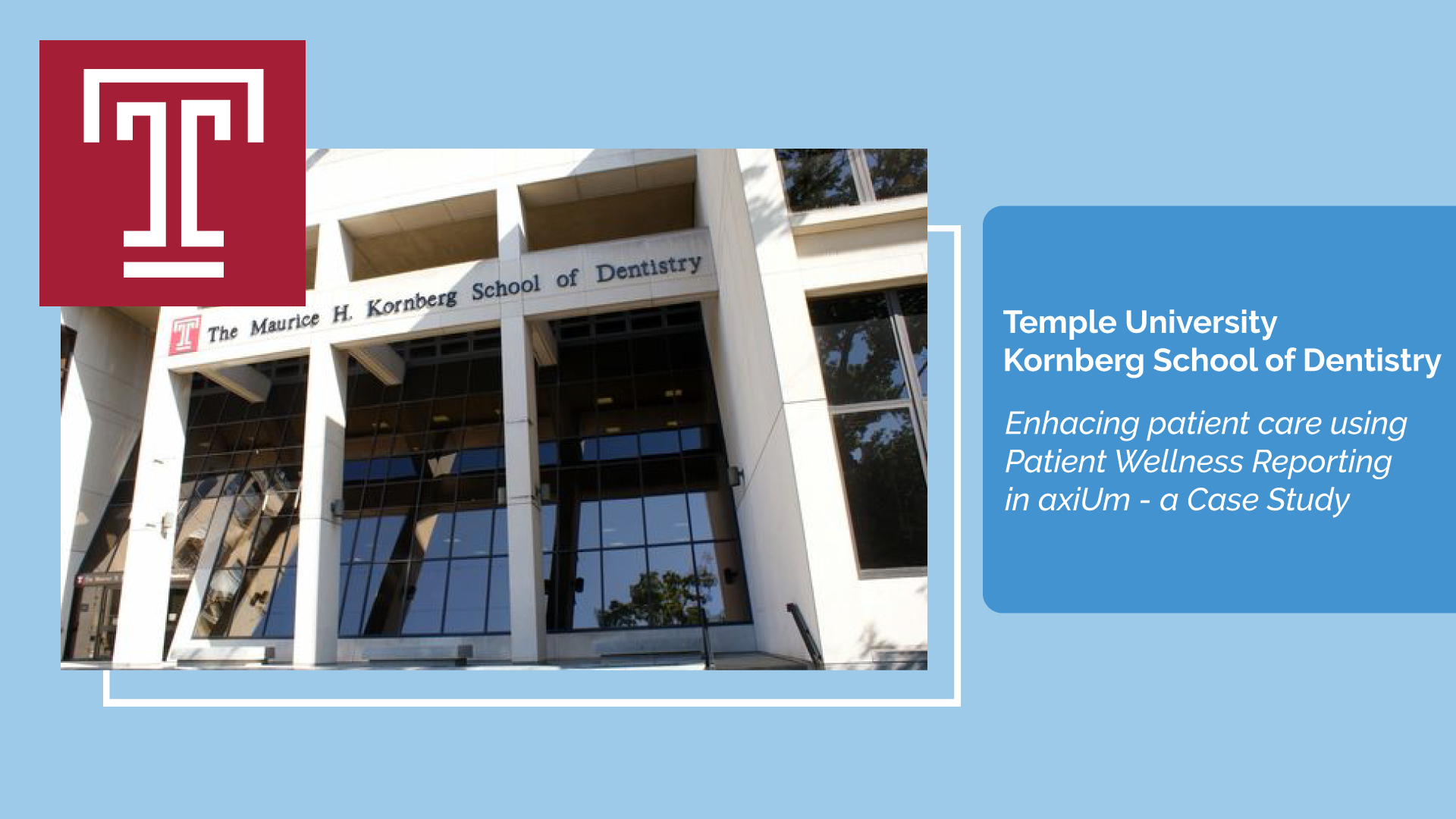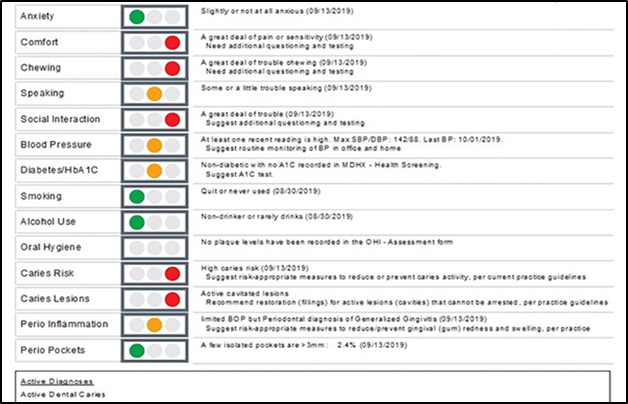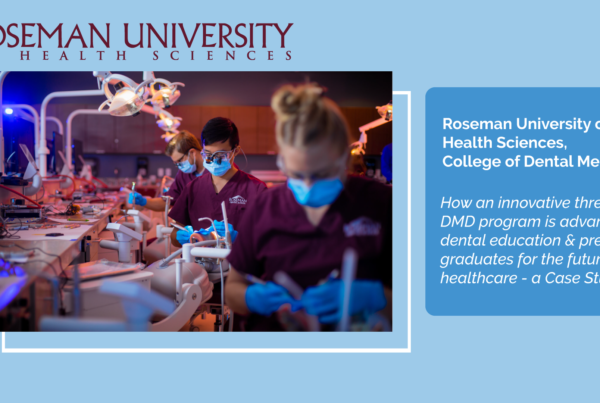Enhancing patient care, from a research perspective, using patient wellness reporting in axiUm with Crystal Reports
What spurred the development of the Patient Wellness Report (PWR)?
Temple University, Kornberg School of Dentistry’s mission has always focused on comprehensive patient care. Temple’s dental school emphasizes looking at the mouth and the teeth, ensuring students understand that any treatment rendered at the school will impact general health outcomes. This philosophy inspired faculty to determine what could strengthen their comprehensive care system and what outcomes could be measured to monitor it. Dean Ismail asked an experienced clinical faculty, Dr. Mark Meraner (retired), to develop the PWR with faculty. The dental school was simultaneously transitioning from paper to electronic health records, so the timing to work on a PWR was apt.
What was the specific goal of the PWR itself?
There are several connections between oral diseases and non-communicable diseases or chronic diseases. Temple emphasizes many of these relationships in their students’ educational programs and training. Under this philosophy, researchers realized there were vital medical metrics they should be monitoring. The goal was to ensure patients had a positive impact after receiving dental care at Temple’s clinic; this included a list of 14 metrics they presented in the PWR. Some are related, for example, to the diabetes status of the patient, to blood pressure (whether it’s controlled or not), and quality of life and behavioral factors (pain, dental anxiety, tobacco usage). Further, Temple wanted to monitor other clinical metrics which are more standard in assessment in dental care, such as the oral hygiene index, caries risk assessment, and the presence of early cavitation.
Who uses the report?
The information originates from the data that is entered into the patient’s electronic health record. This data feeds automatically into the PWR once students have completed two assessments for that patient. axiUm will automatically generate a form allowing them to see the progress made for each metric. Generally, these PWRs are completed for patients once they begin their course of treatment at Temple. The PWRs are used as a baseline for the beginning of patient care, and students are required to update the forms upon completion of dental care. Once patients become recalled patients, students must do another PWR; they are automatically prompted to follow the process of populating the form again.
Since it is pivotal for patients to understand the impact of the treatment they are receiving, students take the opportunity to educate them using the PWR on their screen while patients are in the chair. It is easy for patients to understand their dental progress while students guide them through ‘red,’ ‘green,’ and ‘yellow’ targets. Students explain which areas they have improved or not, and the form highlights which areas need more attention if there has not been enough improvement.
Figure 1. Patient Wellness Report example (Tellez et al., 2020)
How does the report support faculty?
The PWR has provided a more structured environment for clinical faculty to mentor students in a more standardized way while also providing personalized care. Implementing the PWR in the clinic has greatly benefited faculty, as they can now engage in comprehensive follow-ups with students. For example, a faculty member can easily view what conversations the student needs to have with a patient by viewing the form. The faculty member can prepare and walk the student through potentially difficult conversations, which dentists typically do not like to have with patients. In this way, the PWR prompts both students and faculty to work together; in this example, encouraging a reluctant patient with several personal disease issues to participate in a tobacco cessation program. Faculty can further teach students behavioral management and communication skills while working with patients.
What is the process to build the report?
Temple formed a faculty task force to work on this project. The task force began by reviewing researched evidence to identify specific assessments required on the form. Eventually, these became the 14 metrics measured in the report. Reviewing literature was an extensive process for faculty because they first defined the metrics for research purposes and then defined them for usage in a clinic. Time is a major limiting factor for providers; therefore, the task force needed to determine a way for providers to capture all relevant information in an efficient and accessible manner. Various sections within the electronic health record required further development, prompting the task force to develop a sequence of forms in axiUm which guide providers through the PWR:
- Step One: Start at the baseline; PWR factors are shown to the patient, and providers update any unknown values by completing all assessments and documentation.
- Step Two: Document the action plan to improve outcomes using open-ended fields; students then receive guidance on standards to support each health outcome.
- For example, Temple’s behavioral scientists have developed scripts incorporating techniques from cognitive behavioral therapy, which students use to manage dental anxiety among adults. Students can access scripts such as those to guide conversations that need to happen with patients.
- Step Three: Forms are repeated at recalls and follow-up visits. Scoring for each metric populates on the screen showing improvement, no improvement, or regression to guide further conversations. Students update action plans to address any outstanding health concerns; once the case is completed, students have a final assessment and review the patient’s health records once more before the case is closed in axiUm.
Conclusion
PWR supports comprehensive and holistic care, emphasizing the significant connection between the mouth and the overall body, and determining the critical metrics for patients to understand their health journey.
Through the implementation of an EHR (in this case, axiUm), with tools to record and analyze data, patient health outcomes can be measured to assess the effectiveness of a comprehensive care program. Measuring health outcomes is a necessary step on the pathway for assessing the value of dental care to patients. Through regular reviews and education of health outcomes, the provider-patient relationship can develop into a partnership, working together to achieve a common goal of the patient’s health. In this relationship, the patient is fully empowered and engaged in the healthcare. They understand their diagnoses and the risks and benefits of therapy, attend regular visits, and adhere to prescribed home care (Tellez et al., 2020).
PWR aids Temple in tracking patient wellness progress and how both students and faculty facilitate improving patient dental health through communication and technical skills. Ultimately patients have a more holistic care experience, and providers enhance their chairside manner.
For More Information
Dental schools seeking to learn more about how Temple University is improving patient outcomes with wellness assessments through axiUm can reach out to Marisol Tellez, Associate Professor, Director, and Chair of the Department of Oral Health Sciences at the Kornberg School of Dentistry.
References
Tellez, M., Meraner, M., Lim, S., Brandon, R., & Ismail, A. (2020). An innovative approach to assess comprehensive care: Temple University’s patient wellness report. Journal of Dental Education, 652-659.






